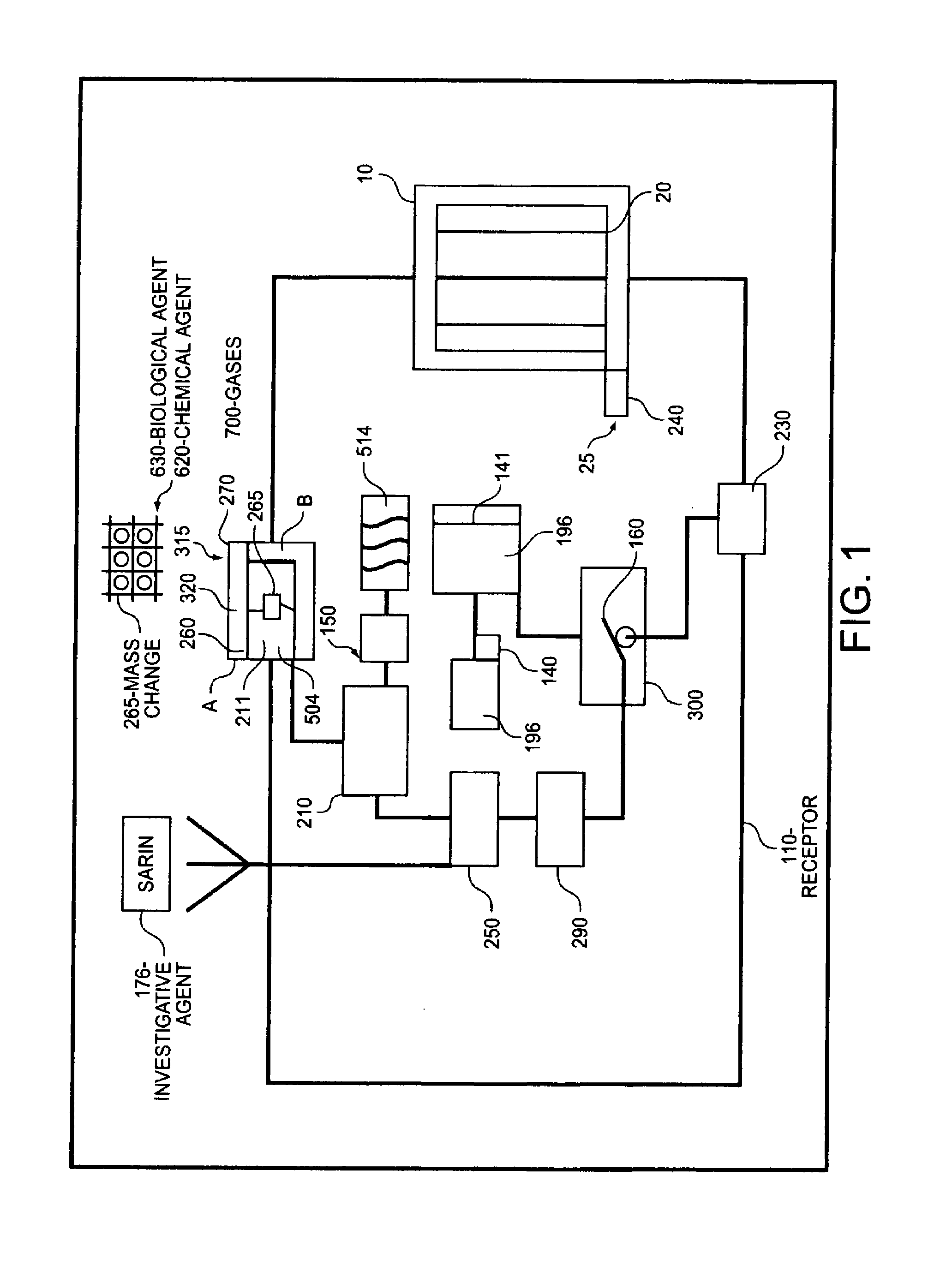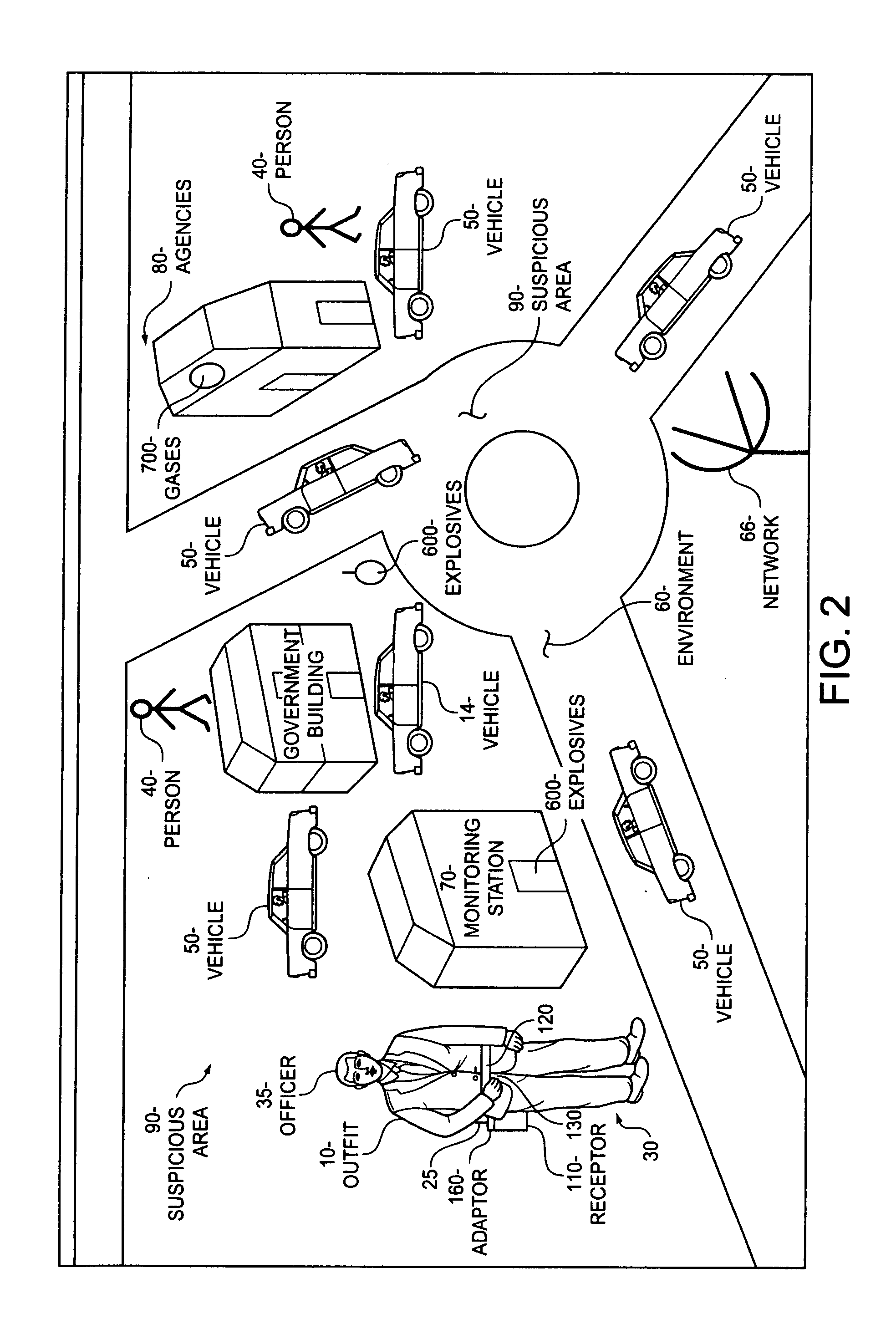Homeland intelligent systems technology "H-LIST"
a technology of intelligent systems and homeland, applied in the field of homeland intelligence systems technology, can solve the problems of inability to detect explosives, inability to detect other detection devices, and inability to use current detection systems, etc., to achieve faster switching speed, small feature size, and low power consumption
- Summary
- Abstract
- Description
- Claims
- Application Information
AI Technical Summary
Benefits of technology
Problems solved by technology
Method used
Image
Examples
Embodiment Construction
[0068]The present invention introduces Homeland Intelligence Systems Technology “H-LIST,” an advanced system's jacket (10) or outfit that is worn by officers, security officers, TSA officers, FBI, CIA, custom officers, boarder patrol officers, military officers and the like, to enable detection of deadly gases (700), and explosives (600), or any weapons of mass destructions, analyzing information and transporting the analyzed information wirelessly through waves to a central security monitoring station (70) or networks, to speedily prevent any use of such weapons, or advice occupants to stay clear from such environment (60) where one of such weapons such as gases (700), had been used. FIG. 1 is seen to show a piezoelectric device with a piezoelectric crystal (260), which allows antibodies (270) to be coated with the crystals to enable multiple use potentials in a solid, liquid, gaseous and explosive detections in all environment, including military, customs, CIA, FBI, chemical firms...
PUM
 Login to View More
Login to View More Abstract
Description
Claims
Application Information
 Login to View More
Login to View More - R&D
- Intellectual Property
- Life Sciences
- Materials
- Tech Scout
- Unparalleled Data Quality
- Higher Quality Content
- 60% Fewer Hallucinations
Browse by: Latest US Patents, China's latest patents, Technical Efficacy Thesaurus, Application Domain, Technology Topic, Popular Technical Reports.
© 2025 PatSnap. All rights reserved.Legal|Privacy policy|Modern Slavery Act Transparency Statement|Sitemap|About US| Contact US: help@patsnap.com



